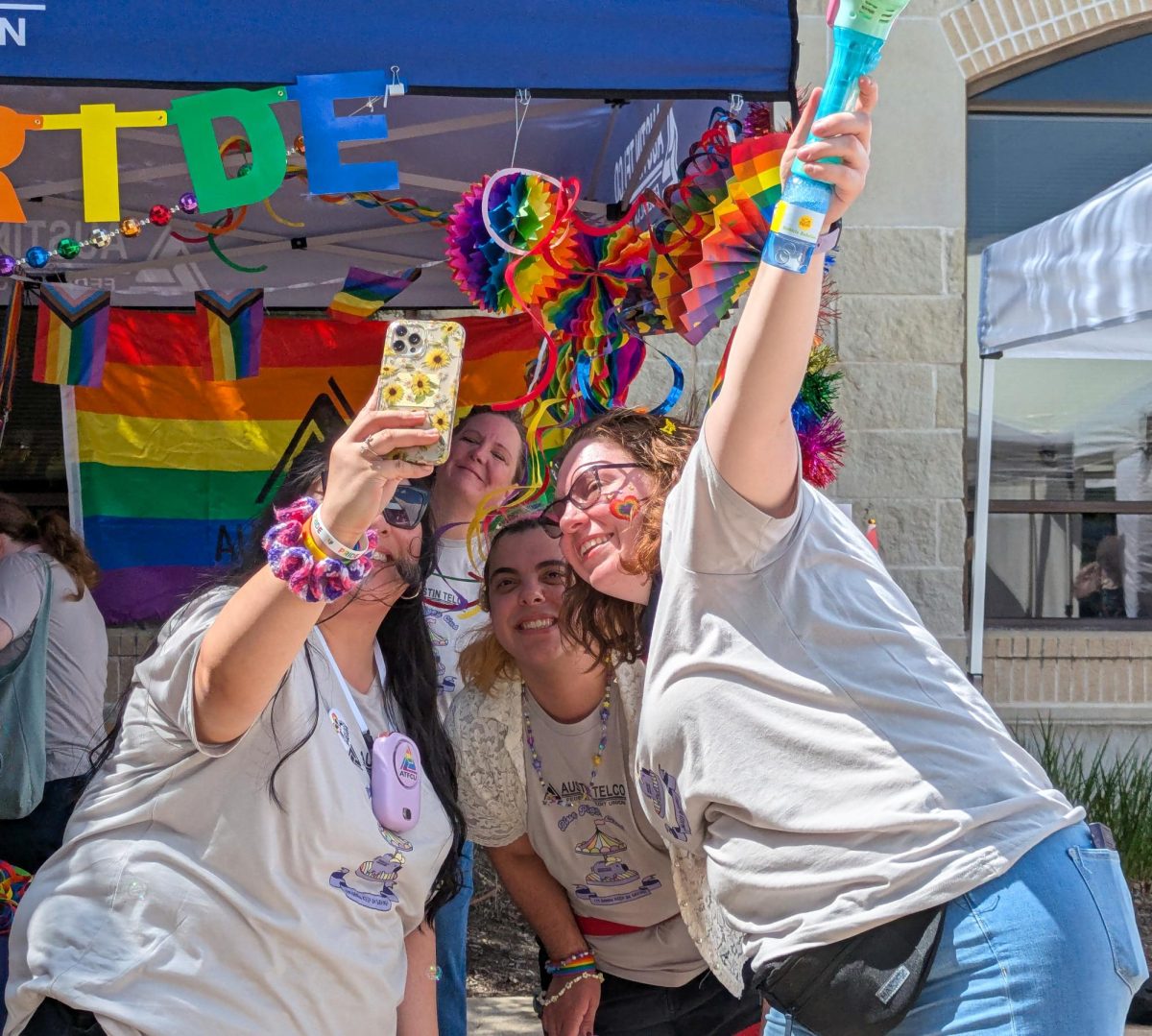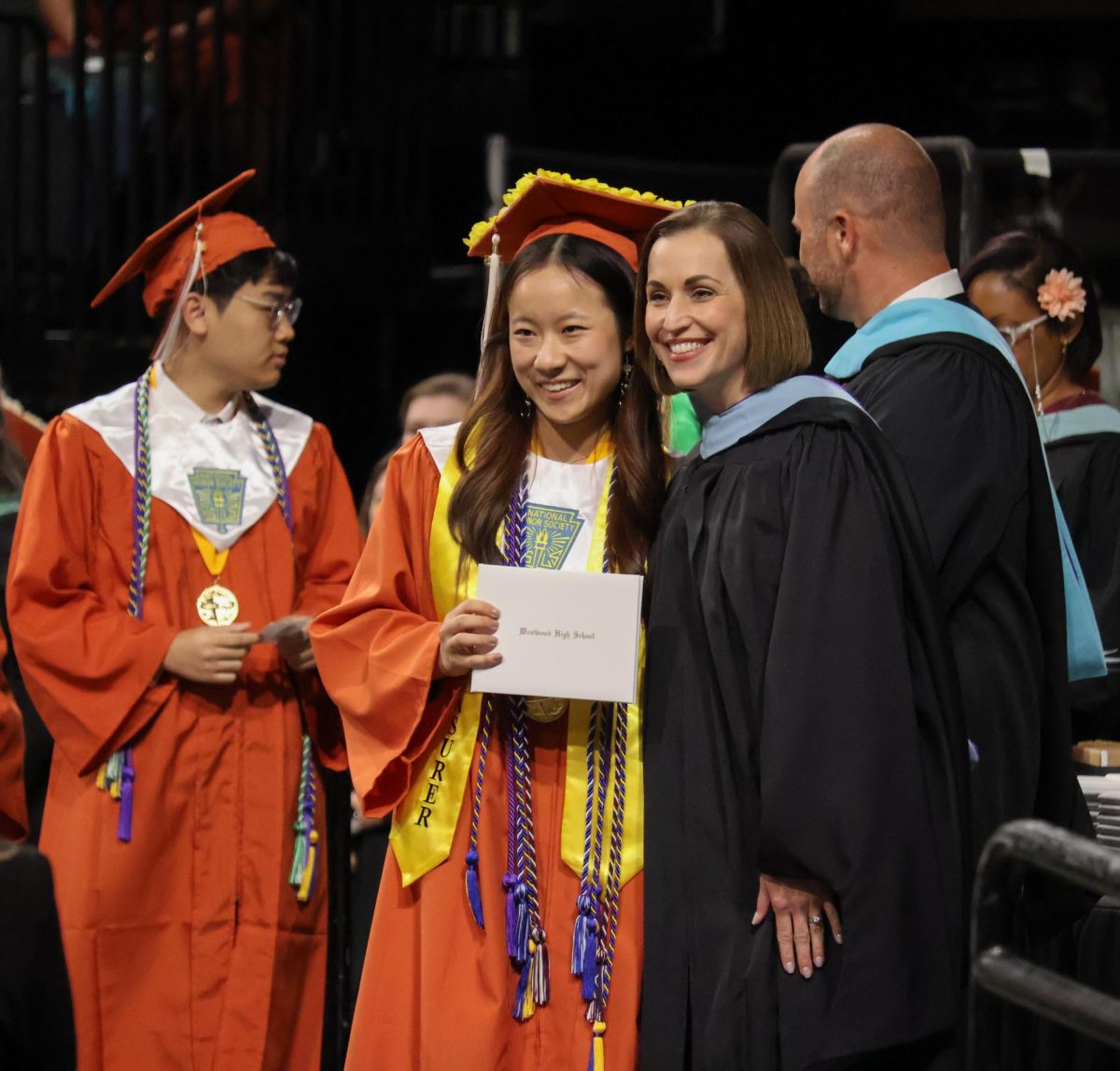As jaunty acoustic guitar music played in the background and chemical preservatives saturated the air, the Anatomy & Dissection Club dissected pigeons in Mr. Eric Scheiber’s room on Friday, Feb. 21. The dissection offered unprecedented challenges to participants due to the specimen’s increased complexity, but was rewarding as students observed the unique anatomical structures that enable birds to eat, digest, and fly.
“We have not [dissected] a system like [the one] birds have [before],” Mr. Scheiber said. “[Their systems] are different from mammals. They do have very similar muscles and structures and key organs, but [also] different things, like gizzards. We saw lots of rock and seed ingestion in certain structures, so their physiology just operates a lot different from common mammals.”
Upon donning safety equipment and sitting down at their desks, the club members were greeted with the familiar smell of formaldehyde. Their first task was to defeather the pigeon specimens to expose bare skin on their ventral surfaces and ease the process of making the first incision.
“I was a little squeamish, to be honest,” Nina Jovanovic ‘25 said. “I did not want to pull the feathers off because it just looked like the bird was sleeping, so I felt really bad. Once we cut it open, it didn’t look [alive] anymore. As long as it’s not recognizable, it’s fine.”
Next, the members cut through the pigeons’ dermal layers and observed the pectoralis muscles underneath, which were used for flight and required precise usage of the scissors, scalpels, and forceps to dissect. After observing the musculature above the pigeon’s organs, the students moved on to the rest of the body. Some groups found undigested food within their specimen, including corn and bird seed, or small pebbles among the green bile of the gizzard, a part of the stomach used to grind food.
“[Pigeons] have to digest food really fast to maintain their body and give a good amount of energy to their muscles,” Gabriel Oliveira ‘26 said. “One interesting thing about this is [that] they actually eat pebbles so that they can crush their food up faster. Pigeons are kind of like purpose-built flying machines. Their organs are all optimized to give their muscles the most energy for flying.”
The students also cut out the birds’ hearts, which were much larger in comparison to human hearts, relative to body weight, due to the vast oxygen requirements of their flight muscles. The precision and complexity of each step in the dissection restricted the amount of exploring that the club members could do, but they were still able to achieve a comprehensive study of the pigeons’ anatomy.
“I feel like if we had more time, we’d explore more, [and] get to the wings and everything,” Anatomy & Dissection Club Mishree Narasaiah ‘25 said, “but I think we got to the important stuff — we got the heart [and] we tried to get the brain. I think the challenge is, every time you try something new, you have to adapt to its positioning [and] its anatomy, but I think with the guides we give, it’s pretty easy to navigate.”
For this dissection, these guides included medical articles and video tutorials instead of the usual instructional slides in order to capture all of the steps and techniques required in the process. Like normal, the members were also given free rein to focus on the structures that they found most interesting, especially given the variable contents of the specimens due to the presence of different items in the gizzard.
“Even though there was a guiding video, every animal is going to be different, so [a dissection] is not only following instructions, it’s also problem-solving,” Oliveira said. “You’re trying to figure out how you can alter [the instructions] to fit your creature, your goals, and what you want to learn. You don’t need to follow them exactly if you want to explore something else.”
Similar to the previous two dissections — the frog and the crab — the pigeon dissection was a first for the club and introduced the prospect of branching out into other bird dissections in the future.
“This one was definitely one of my favorite [dissections], because we could actually see all the organs and they were all intact,” Anatomy & Dissection Club Vice President Ava Fakhar ‘26 said. “It was really interesting. We’ve never done a bird in this club before. We just thought it would be fun to try something new.”
Anatomy & Dissection Club will meet again to dissect iguanas on Friday, March 28 at 8 a.m. in Mr. Scheiber’s room.

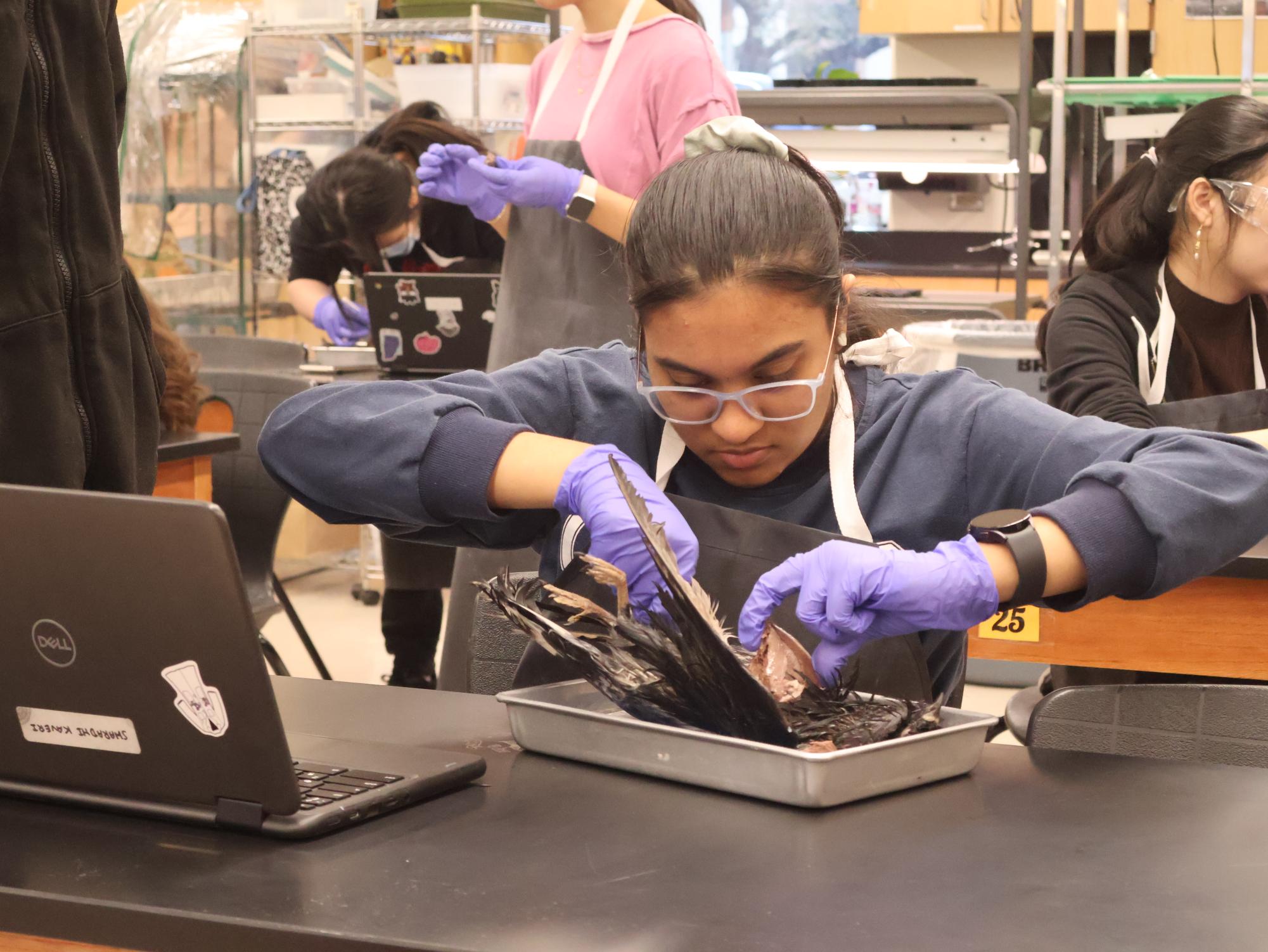
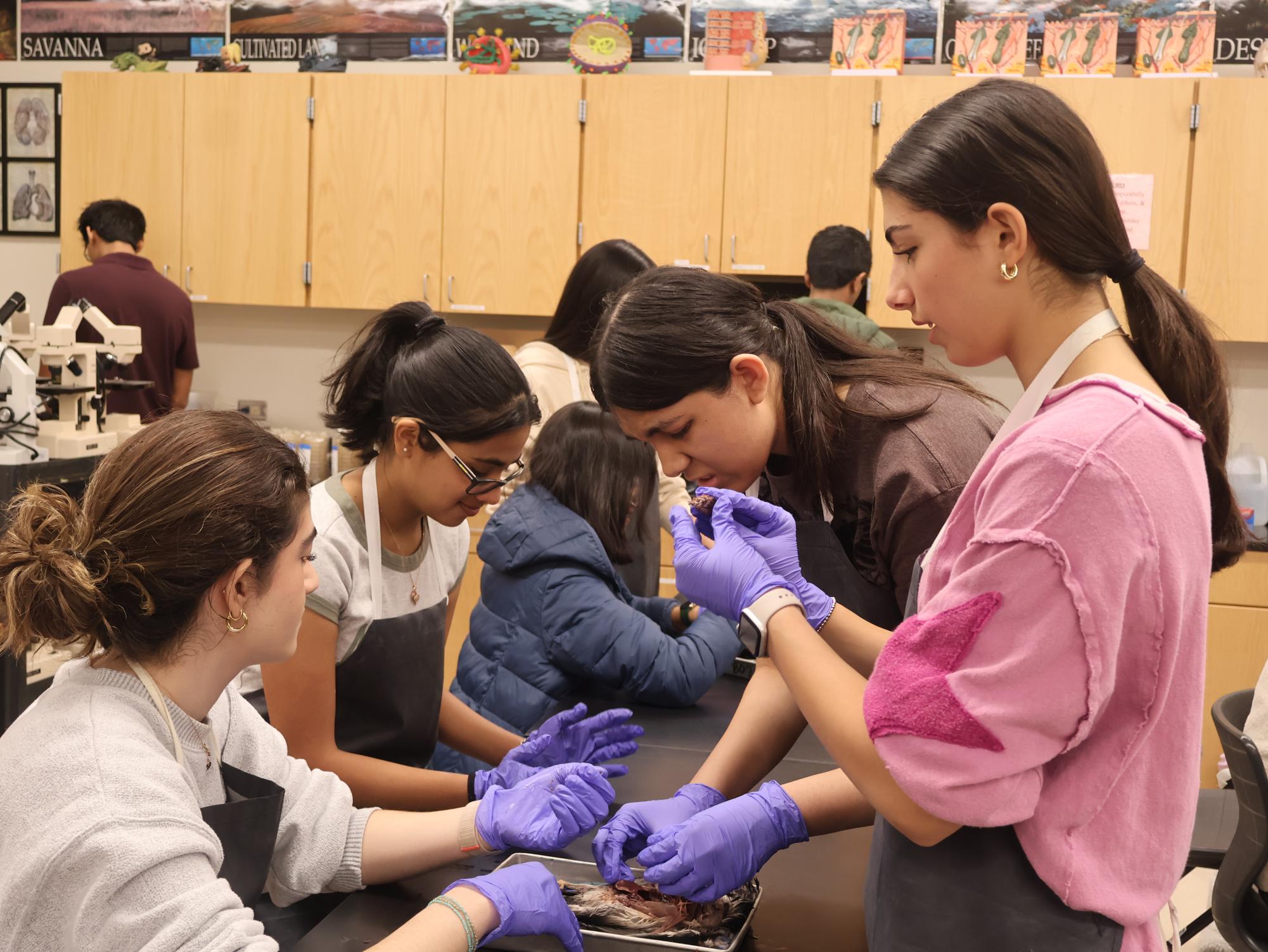
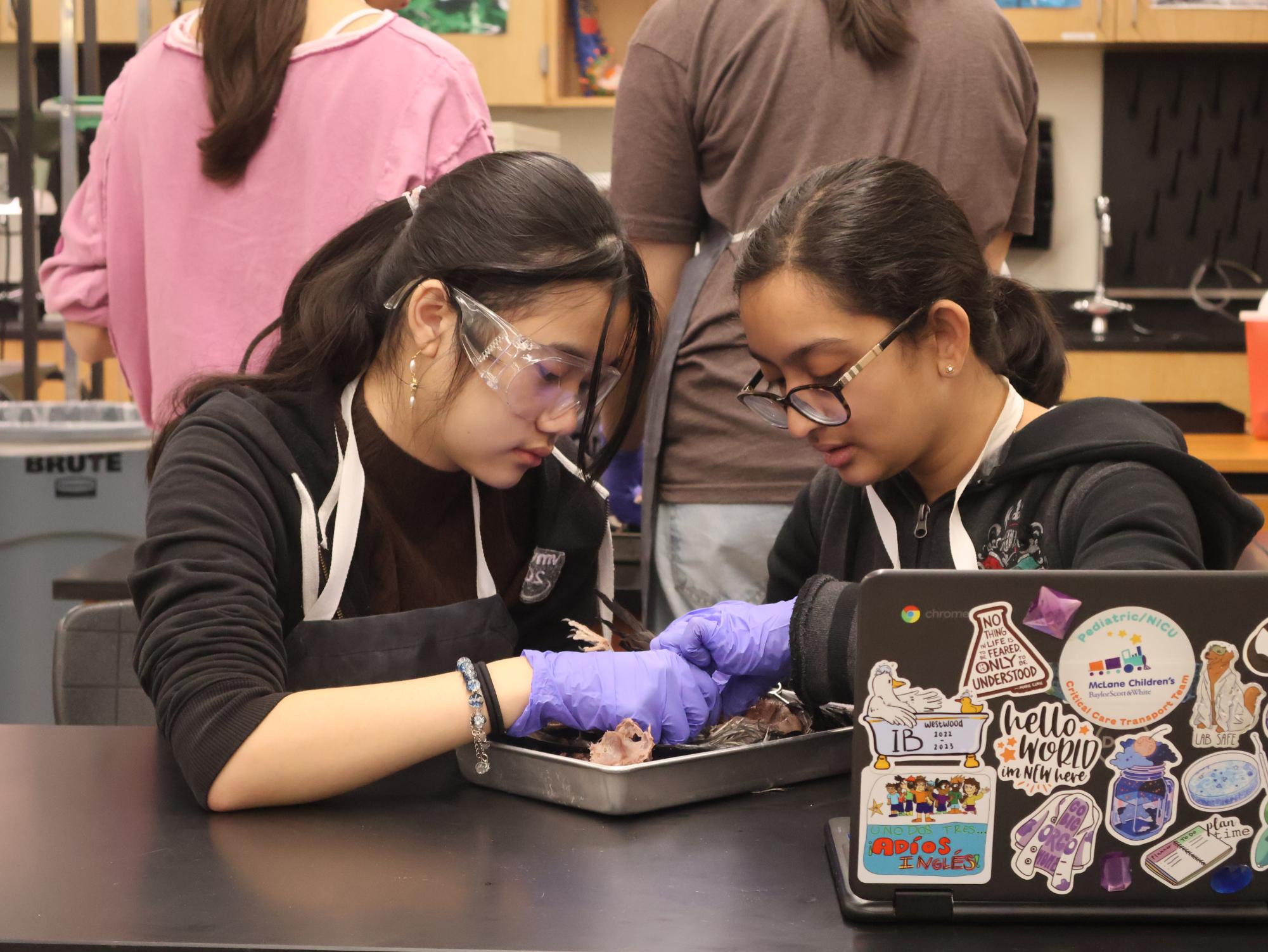
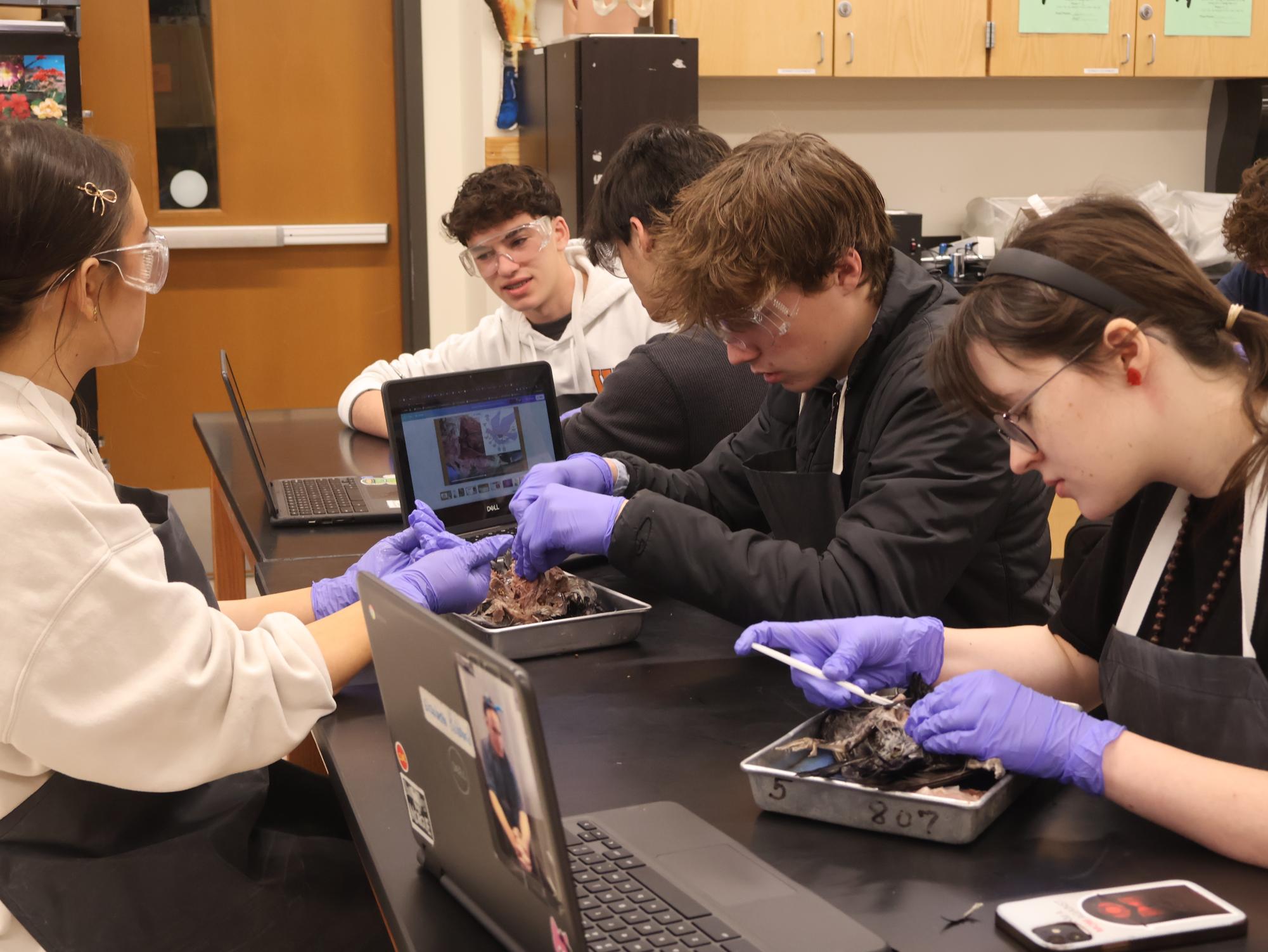
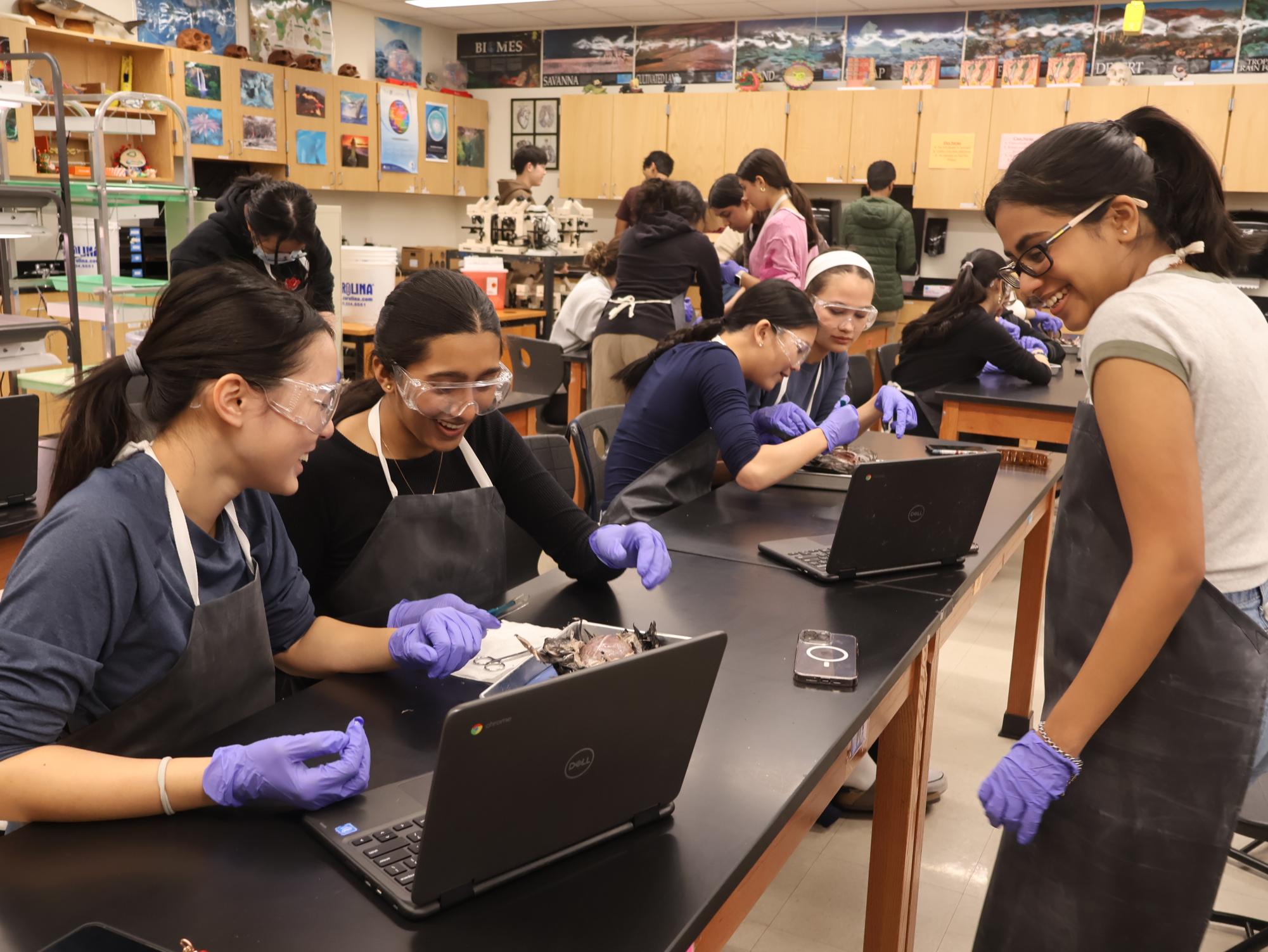
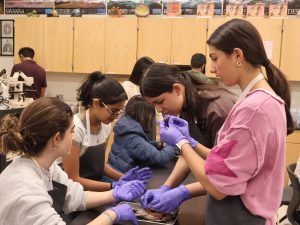
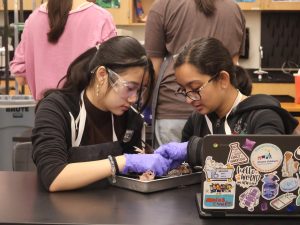
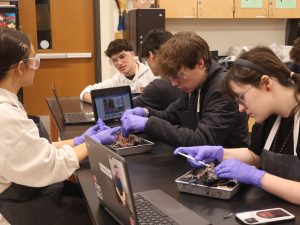
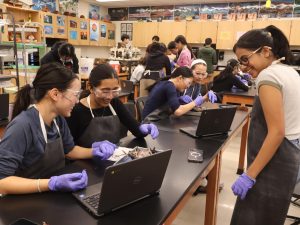

![Intensely concentrated, seniors Ari June, Christine Kim, and Sahana Suryanarayan collectively paint a portrait of Charli XCX's face. While painting, they shared stories about past experiences and bonded over similar interests in music. "I've definitely grown as a collaborator because in NAHS [National Art Honor Society], you're all growing together as artists and collaborators," Suryanarayan said. "The portrait helped me make room for others while painting."](https://westwoodhorizon.com/wp-content/uploads/2025/09/Edit_2025-09-02_NAHSMeeting_SophiaCortes-4-1200x800.jpg)















